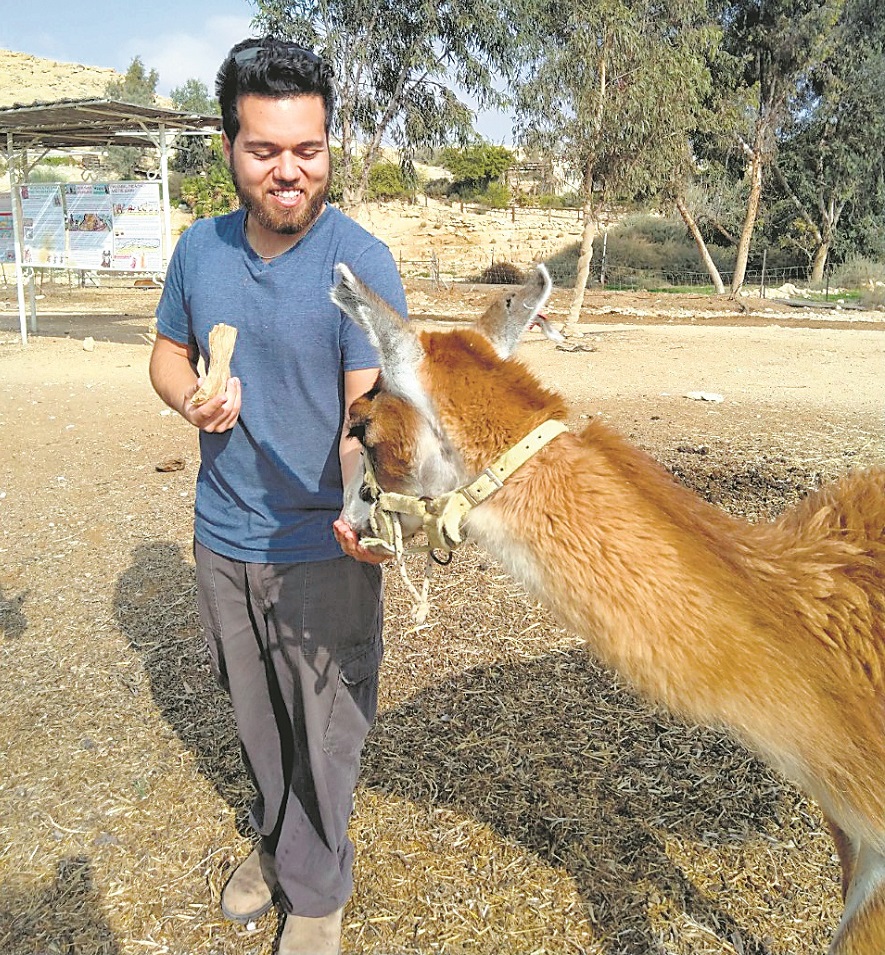
Purnima Sharma
In the heart of Israel’s Negev Highlands lies a little home of the exotic alpacas and llamas who were brought here from South America by a young couple over three decades ago. And how did they reach here? Well, in a Boeing aircraft . All the seats were removed to create pens for the comfort of 180 alpacas and 20 lamas as they flew to their new home near the Ramon Crater in Israel.
The almost unthinkable journey was made possible by the animal loving couple of Naama and Ilan Dvir, who were travelling around in the Andes, 4,000m above sea level, soon after completing their military training about 33 years ago. As they wandered in the picturesque Andes, they came across alpacas and promptly fell in love with them.

the animals to Israel
For the uninitiated, alpacas are miniature camels, also referred to as new-world camelids. For some, they might seem like a cross between a deer and a sheep with a very thick, woolly coat. These delightful animals have pretty shaggy necks and camel-like faces with thick lips, pronounced noses and long ears. Needless to say, so charmed were the Dvirs that they promptly decided to take them back home, to Israel.
The duo wanted to raise these animals in Israel and produce high-quality yarn from their wool. So when they proposed the idea to the authorities in Chile where alpacas are raised (incidentally, Bolivia and Peru are the other places in South America where you might see these animals), it soon became evident that things might not go as smoothly as they had envisaged. Regarded almost like a national treasure, permission by the South American authorities was denied. Well, for a while at least.

Photos by the writer & istock
Meanwhile, the Dvirs spent months trying to understand the habits of alpacas and llamas (the other breed they liked) by spending time with the Inca descendants, an American-Indian people in Chile, who kept these animals. The Incas milked the alpacas and used their wool to create clothes that protected them against the piercing cold. The llamas, on the other hand, made great beasts of burden.
Once the authorities, both in South America and Israel, were convinced that the Dvirs meant well and their only intent was to improve the breed and create good-quality wool, the permission was granted almost five years after they had first approached the authorities.
In the meantime, having understood that these exotic animals were used to a rather unique environment, the Dvirs zeroed in upon a small isolated valley, Mitzpe Ramon, in southern Israel. This, they felt, was the only place that met the climatic requirements for raising alpacas, for both summer and winter, the cold nights and dry climate, stimulate wool growth and ensure its high quality. Keen to bring in the best of the breeds, the couple travelled to many villages in Chile and handpicked the finest of alpacas based on their looks, wool colour and texture.
The shifting of the herd from Chile’s southern hemisphere to northern in Israel in the winter of 1987 caused some confusion in the animals’ biological clock but things soon settled down. As any visitor to the farm is sure to agree, both alpacas and llamas seem to be doing well here.
It’s a delight walking around the farm, spread over more than 80 km of fenced space, and seeing these graceful animals graze in green stretches. Besides, a host of other animals including horses, donkeys, angora goats and chickens and 13 dogs, who double up as guards, give company to these animals from the distant land. If you’re lucky, you might be able to watch the process of breeding, shearing and processing of the wool in the ‘spinnerry’, and even the area where knitters sit creating garments out of them.
What visitors like me enjoyed the most was spending time with alpacas and llamas. You’re allowed to feed them pellets and, sure enough, they will have never have enough of them. Enjoying our delighted look, Mark Shor, manager at the farm, had a word of warning though: “Just take care. Although very docile, alpacas, if they find something disagreeable about you, might suddenly spit to scare you off.”
Join Whatsapp Channel of The Tribune for latest updates.



























